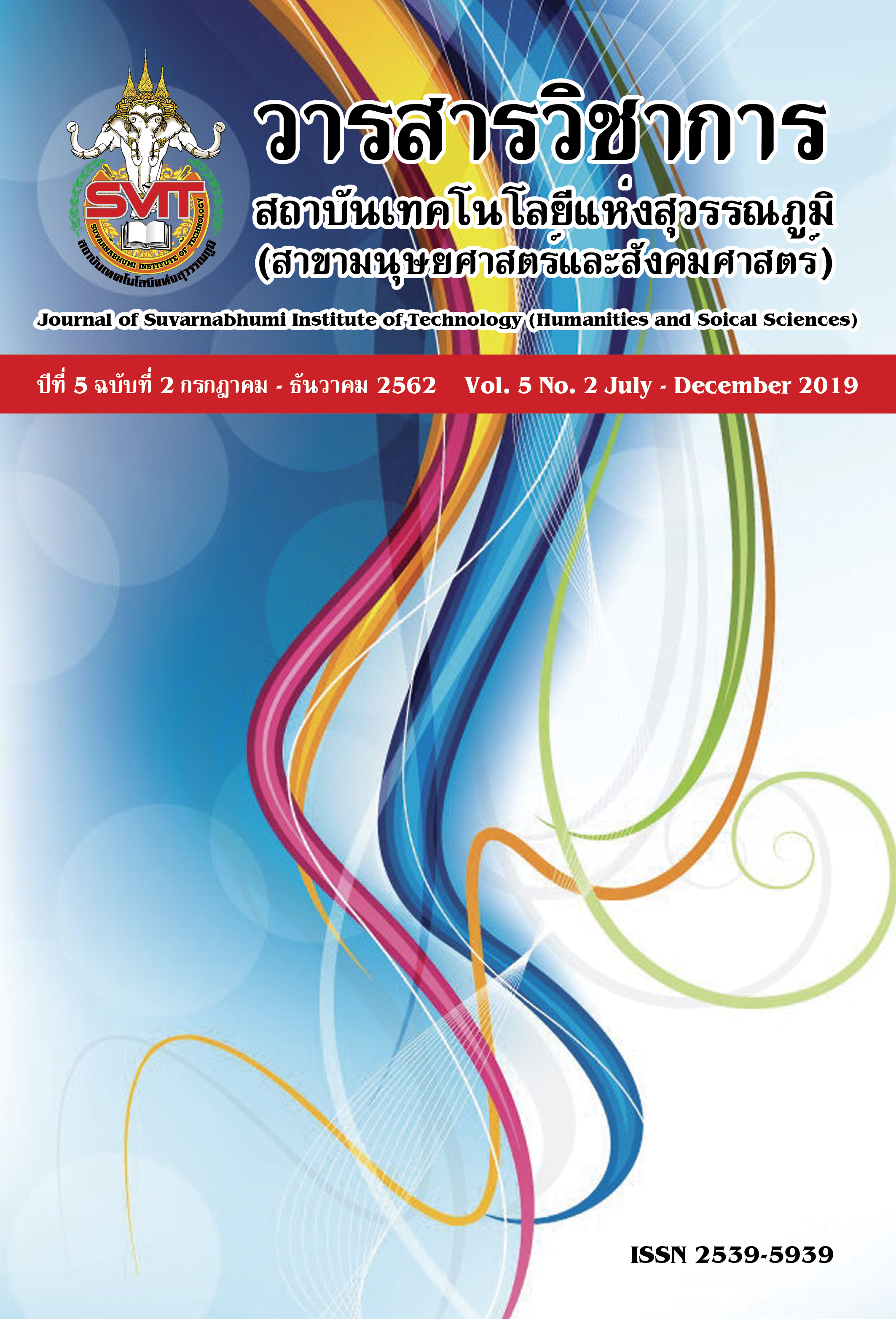THE IMPACT OF CAUSAL FACTORS RELATIONSHIP RELATED TO GOVERNMENT'S SUSTAINABILITY POLICY IMPLEMENTATION IN THAILAND UNDER NATIONAL STRATEGY THAILAND 4.0
Keywords:
causal factors, government’s sustainability policy, Thailand 4.0, co-integration and error correction mechanism testAbstract
From past to present, the government of Thailand has been putting great efforts to achieve sustainable development. In order to simultaneously achieve economic, social, and environmental growth, it is necessary for the country to set plans that align with the national agenda. Every year, a plan assessment has been carried out. Former data showed that the national economy had grown tremendously and positively changed along with continuous social growth. However, this showed a negative impact on environmental damage as greenhouse effects increased continuously. Therefore, these three aspects through a relationship analysis was deemed important to the national development and management effectiveness. This research aimed to analyze the influence of the direct and indirect relationships of economic, social, and environmental factors as well as predicted their future effects by applying the path analysis-generalized method of moments (path analysis-GMM model). The model was believed to be the most effective in relationship analysis, and was capable of accurate prediction when compared to the original models. Most importantly, the model caned be applied to different contexts, benefiting the development areas of those contexts. Furthermore, the model was also found to be the best linear unbiased estimation (BLUE), suitable for long-term forecasting. However, the study’s results reflected that the three latent variables of economic, social, and environmental factors had direct and indirect effects. In addition, both economic and social factors were found to have a causal relationship. This further adds another evidence in which the path analysis-GMM model was the most suitable in forecasting and contextual application to support the formulation of the national strategy in the future.
References
Office of the National Economic and Social Development Board (NESDB). Available online: http://www.nesdb.go.th/nesdb_en/more_news.php?cid=154&filename=index (accessed on 1 October 2018).
National Statistic Office Ministry of Information and Communication Technology. Available online: http://web.nso.go.th/index.htm (accessed on 2 October 2018).
Department of Alternative Energy Development and Efficiency. Available online: http://www.dede.go.th/ewtadmin/ewt/dede_web/ewt_news.php?nid=47140 (accessed on 2 October 2018).
Thailand greenhouse gas management organization (public organization). Available online: http://www.tgo.or.th/2015/thai/content.php?s1=7&s2=16&sub3=sub3 (accessed on 2 October 2018).
Barbara, M. B. (2012). Structural equation modeling with Mplus: basic concepts, application, and programming. New York: Taylor & Francis Group.
Dickey D.A., Fuller W.A. Likelihood ratio statistics for autoregressive time series with a unit root. Econometrica 1981:49:1057–1072.
Johansen S., Juselius K. Maximum likelihood estimation and inference on cointegration with applications to the demand for money. Oxford Bull Econ Stat 1990:52:169–210.
Johansen S. Likelihood-based inference in cointegrated vector autoregressive models; Oxford University Press: New York, NY, USA, 1995.
MacKinnon J. Critical values for cointegration test in long-run economic relationships; Engle, R., Granger, C., Eds.; Oxford University Press: Oxford, UK, 1991.
Enders W. Applied econometrics time series; Wiley series in probability and statistics; University of Alabama: Tuscaloosa, AL, USA, 2010.
Harvey A.C. Forecasting, structural time series models and the Kalman Filter; Cambridge University Press: Cambridge, UK, 1989.
Downloads
Published
Issue
Section
License
บทความที่ได้รับการตีพิมพ์เป็นลิขสิทธิ์ของวารสารวิชาการ สถาบันเทคโนโลยีแห่งสุวรรณภูมิ
ข้อความที่ปรากฏในบทความแต่ละเรื่องในวารสารวิชาการเล่มนี้เป็นความคิดเห็นส่วนตัวของผู้เขียนแต่ละท่านไม่เกี่ยวข้องกับสถาบันเทคโนโลยีแห่งสุวรรณภูมิ และคณาจารย์ท่านอื่นๆในสถาบันฯ แต่อย่างใด ความรับผิดชอบองค์ประกอบทั้งหมดของบทความแต่ละเรื่องเป็นของผู้เขียนแต่ละท่าน หากมีความผิดพลาดใดๆ ผู้เขียนแต่ละท่านจะรับผิดชอบบทความของตนเองแต่ผู้เดียว





